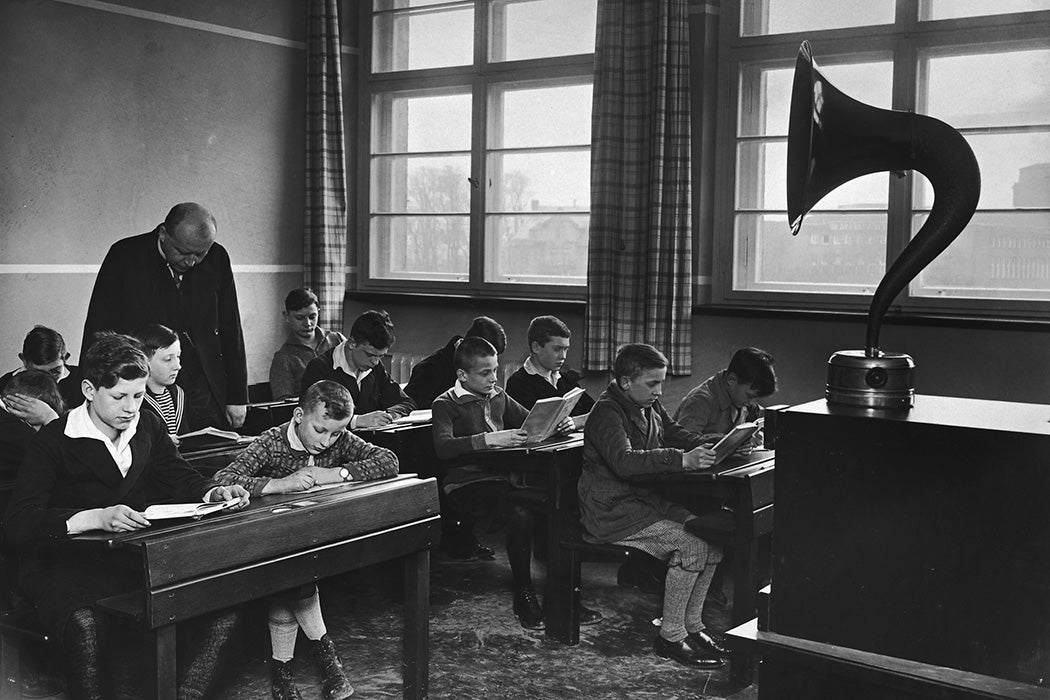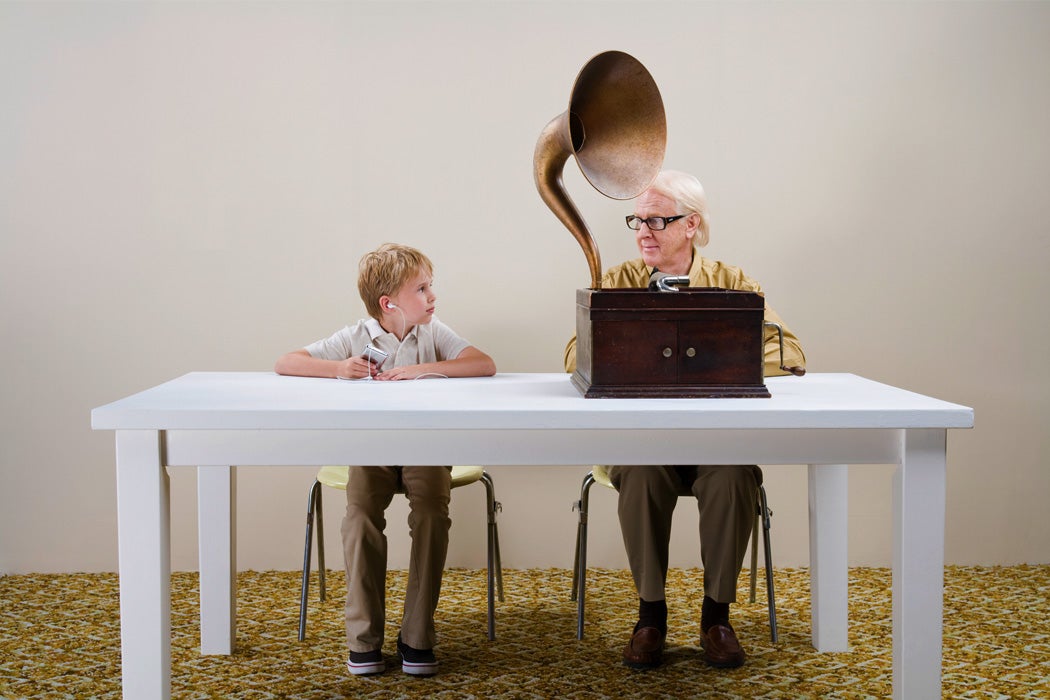Today, students spend a lot of classroom time using tech corporations’ products, from Google Docs to Minecraft. A century ago, a corporation found its way into schools with a different kind of technology, the Victrola record player. As music historian Julia J. Chybowski writes, it managed this thanks largely to the work of Frances E. Clark, an educator who saw music appreciation—and therefore the Victor Corporation—as a force for moral good.
Chybowski writes that Clark grew up in the rural Midwest in the 1860s. She began teaching singing lessons while she was still a young teenager. She married at fourteen and became a widow with two children at twenty. To support herself, she taught music in public schools and gave private lessons. Clark viewed music education as a way of stirring moral feelings and cultivating patriotism, particularly among immigrants and poor people. She kept on top of trends in music education and adopted new methods, such as beginning choir rehearsals with brief lectures on music history.
“Developing musical intellect in her students involved their active music making, but could not, in Clark’s view, be developed through singing alone,” Chybowski writes.
This helps explain Clark’s interest in Victor, which, in the early twentieth century, positioned itself as the place to find recordings of “good music” in America. It focused its advertising on its Red Seal records, which included opera excerpts and instrumental European Classical music—although its less expensive Black Seal recordings of dance music and pop songs were actually bigger sellers.
In her broad networks within the music education community, Clark was a sincere advocate for the Red Seal records. Victor moved to take advantage of her enthusiasm, hiring her as the head of a new education division in 1911.
Chybowski writes that many of Clark’s music education colleagues were initially skeptical of using recorded music in the classroom. Some viewed the industry as promoting poor-quality, morally questionable songs. And some were also hostile toward records because of the threat they posed to the careers of working musicians. Clark turned this logic on its head, suggesting that high-quality records offered children the chance to hear “real music,” as opposed to the halting efforts of their classmates. She introduced “music appreciation” to elementary schools, leading the creation of a book to help teachers plan lessons around various Victor records.
Weekly Newsletter
Clark also tacitly positioned lessons in European symphonic and folk music as an antidote to the threat of jazz. Students were supposed to learn to react to music in an orderly way, avoiding the “orgy of wild contortions and cavortings” that she claimed was all too common in popular dance styles. She also encouraged mothers to get a Victrola for the home, since “good music” could protect children from the “line of outside attractions which stand ever with beckoning fingers to debauch our girls and boys.”
Clark remained with Victor until her retirement in 1947, helping to cement the role of the record player—and “morally uplifting” music—in the classroom.
You May Like
The Importance of Technological Change in Shaping Generational Perspectives
Support JSTOR Daily! Join our new membership program on Patreon today.








